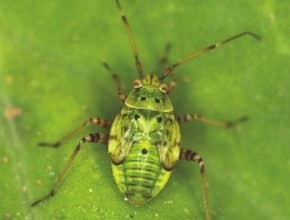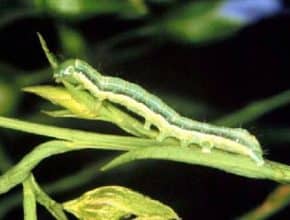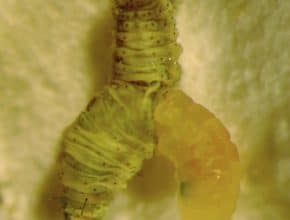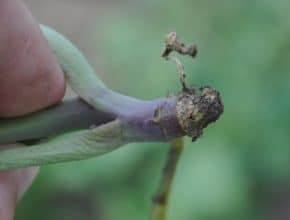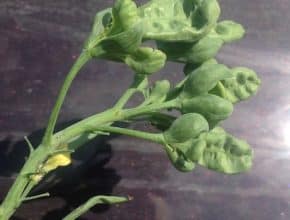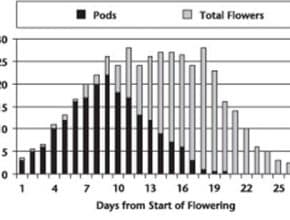Second generation lygus have arrived. Young nymphs will reach late instar and adult stages in 5 to 14 days. When scouting to see if lygus numbers are near thresholds, include later instars — the ones with black dots on their back — as well as adults in the count. Bertha armyworm larvae are starting to feed in some locations…
Canola Watch Posts
-
-
-
We don’t have scientific evidence to combine thresholds, but where an “additive” effect of multiple species can make sense is when more than one species are feeding on key yield-producing areas — flowers, buds or pods — at the same time…
-
Lygus, bertha armyworm and diamondback moth have a number of natural enemies that will keep populations in check. These beneficial insects may not control an immediate insect threat — growers will still have to spray if economic thresholds are reached — but beneficials can keep a lid on populations. The key to preserving beneficial insects is to follow thresholds and…
-
-
Fields all across the Prairies are reporting aster yellows. The phytoplasma infection causes misshapen pods and flower buds. Most fields don’t go above 1% infected plants, however, some fields are reported this year with rates at 5% to 8% of plants infected. A 10% infection rate results in 3% to 7% misshapen seeds or no seeds at all…
-
When sweep netting for lygus, include late instar nymphs — the ones with black dots, as shown above — when doing counts for thresholds. Sclerotinia stem rot risk is still high in most regions. Fungicide labels allow for spray up to 50% flower. Spraying this late may work well if the crop seems to be flowering for a long time…
-
-

